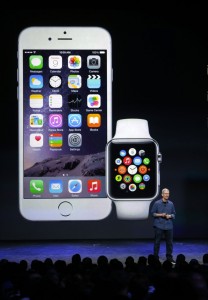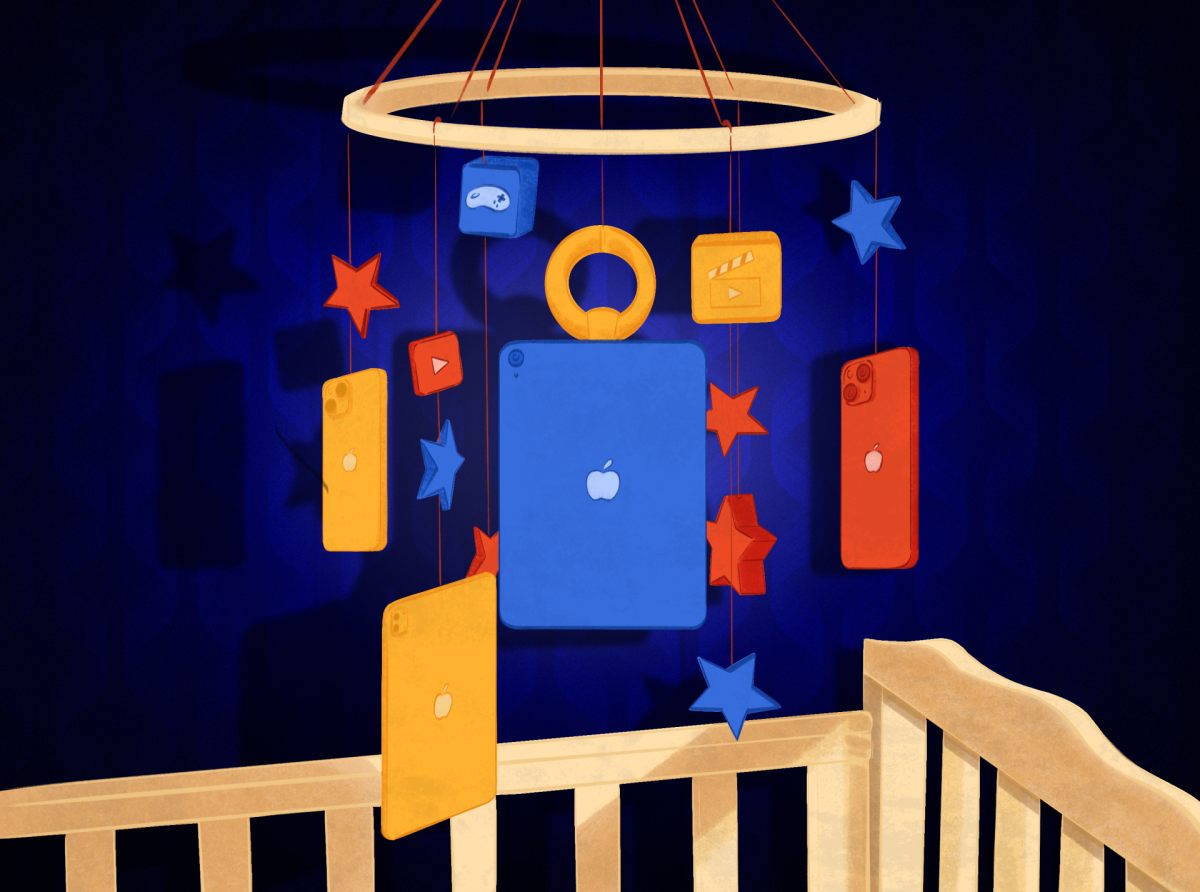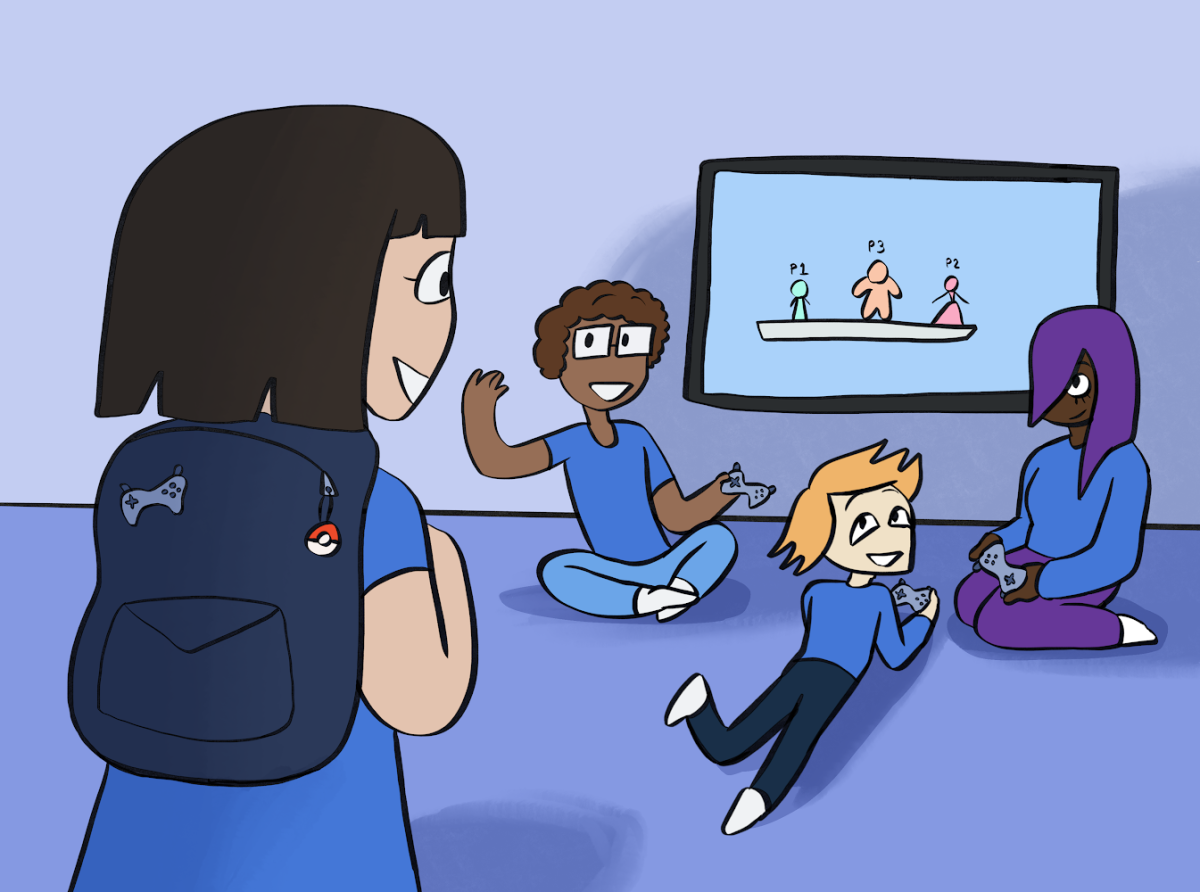
Thirty years ago during the 1984 Super Bowl, Apple Inc. aired their iconic commercial introducing Macintosh. Resembling George Orwell’s dystopian society, the commercial featured an audience captivated by a screen with a man talking on it, presumably the all-seeing and all-knowing Big Brother. A woman suddenly swings a mallet, hitting the screen, followed by Apple Inc.’s now famous saying, “On January 24th, Apple Computer will introduce Macintosh. And you’ll see why 1984 won’t be like ‘1984.’”
After watching the keynote speech introducing the iPhone 6, iPhone 6 Plus and Apple Watch, it seems that Big Brother is among us more than ever. The 123-minute speech was quite the production. With live demonstrations of the new devices, a guest appearance by the band U2 and a venue filled from top to bottom with an audience, all eyes were on Apple Inc.
To give a quick summary of the new iPhones, the iPhone 6 has a 4.7 inch display, while the iPhone 6 Plus has a 5.5 inch display. Both are taller and wider than any other iPhone that has been made, a detail that was highly stressed during the keynote.
The larger display was advertised as a revolutionary change to the iPhone. Philip Schiller, the Senior Vice President of Worldwide Marketing for Apple Inc., demonstrated how the larger screen enables the horizontal view to do much more than a regular iPhone. The home screen can now be horizontal with the dock on the right side, text messaging is more functional as you can now see your list of texting contacts on the left side while your conversation is placed on the right, and the keyboard no longer takes up half the screen.
While in this context bigger can be called better, can bigger be called innovative? Jony Ive, the Senior Vice President of Design, explained that “the design has never been so compelling.” I wouldn’t exactly call the extra .7 inches and thinner design compelling. But if you judged the reaction of the crowd, you would guess that Apple Inc. had just unveiled that the moon was made of cheese. Amazement, disbelief and utter surprise washed over the crowd as they watched Schiller, and also Tim Cook, the CEO of Apple Inc., describe their newest innovations.
While some may argue that the iPhone 6 and iPhone 6 Plus do introduce a longer battery life, I think this is somewhat of a fallacy. With the higher retina display and bigger screen, the new iPhones must have a new battery life in order to sustain them and make them functional.
As Gordon Kelly writes in Forbes, the longer battery life “will depend on the settings you specify, such as screen brightness, auto lock screen time, etc, the strength of the signal in your area — weak signal is more draining— even the particular apps you install, how well they are coded and the settings you specify — for example: how often should your podcast app check for new episodes or your RSS reader refresh.”
While the iPhone 6 and iPhone 6 Plus may not necessarily be counted as innovative, the Apple Watch certainly can be classified as a brand new Apple product. As Cook unveiled the new product, the crowd erupted into applause and an eventual standing ovation. People were moved to their feet at this revolutionary device. Is this a scene taken straight out of Big Brother?
The Apple Watch is a device created to be constantly attached to you, more so than your phone if that is even possible. It’s literally strapped to your wrist and its health and fitness features track your every move. Is that what people want these days? The Apple Watch keeps you in constant communication with people and monitors your movements, locations— your entire life. The Apple Watch is an extension of your phone in the worst possible way. Not to mention it’s even pricier than the iPhone 6 and iPhone 6 Plus at $349. It has a release date of early 2015, perhaps drawing out the hype even longer.
Something that was constantly reiterated during the unveiling of the Apple Watch was how personalized it can be. With three distinct collections, Apple Watch, Apple Watch Sport, and Apple Watch Edition, customers can pick from different watchstraps to find one that fits their lifestyle. Apple Inc. has promised its customers customizable watch faces with millions of different appearances. In Apple Inc.’s eyes, customization is innovation.
An ironic moment of the keynote happened during the standing ovation of the Apple Watch. The hundreds of people in the crowd stood to their feet cheering and clapping and also taking pictures of the moment on their iPhones. At that moment it became apparent how 2014 resembled “1984” in ways that Apple Inc.’s iconic commercial potentially predicted.
Apple Inc. is everywhere; it’s inescapable. Its products generate hype and convince us that they are constantly changing the technological world and making all of our lives easier. They produce products that we seemingly cannot live without. The keynote’s introduction of Apple Pay, an easier way to pay using the touch of your finger to your iPhone 6, convinced customers that the hassle of pulling out your wallet and searching for your plastic is too time consuming and complicated.
They pulled the classic infomerical move and presented a video with a woman trying to pay at a cash register. It included a frustratingly enormous amount of steps to simply pay for her purchases. Of course, using the classic infomerical method, the next video showcased the woman simply tapping her phone with her finger pressed on the home button to pay. Instantly, the world of purchasing was changed by Apple Inc.’s announcement of Apple Pay.
The pull that this company has in all our lives is fascinating. The moves they make affect us all. They lead us to believe that every update and every product is revolutionary. They are shrinking the world and changing business. While there are obviously many positives to these technological updates, Apple Inc. is changing the way that we communicate as humans. Communication is becoming constant in a way that it never had been before.
Communication can now happen in fast, unemotional ways. Apple Inc. has coaxed us, and perhaps acquiesced us, into believing that easy communication is better communication. Apple Watch introduces a new function where users can communicate with digital touch communication. This means that users can simply send pictures they draw with their fingers to another watch user. Are we going back to prehistoric times by communicating with well known symbols?
With Apple Inc. — or should I say Big Brother — pulling the strings, it’s hard to know if these new mediums of communication are changing our world for better or for worse. War is Peace, Freedom is Slavery, Ignorance is Strength, and Communication is Isolation.








Rattyuk • Sep 22, 2014 at 10:51 am
No.
mds • Sep 22, 2014 at 9:59 am
It’s all good in it’s place. When socializing in person I find it rude that everyone is glued to their phone instead of engaged with their friends, It’s also rude when sitting at a meal with others and being more focused on your phone than a night out.
In many cases it is “a failure to communicate”.
Zoe Krey • Sep 22, 2014 at 3:22 pm
Thanks mds for your comment!
I think that the Apple Watch will also add to the failure to communicate while actually being in the presence of someone else. It will be interesting to see how widespread this device becomes in our society.